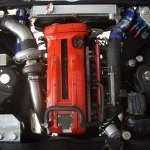Different Boost Readings?
Announcements
-
Similar Content
-
Latest Posts
-
For race cars, this is one part where I find having the roll cage bar having gone through a hole in the floor better than the build it up on a ledge inside... The Merc I help on, the main hoop ends are marked on the car, and the jack is marked... Jack goes under a few inches and lifts one whole side of the car up... Removes that fight for long slim jacks for race car duties! My biggest issue for the daily drivers I work on, is my jacks don't go high enough. The jacks start out on a few blocks, jack it up, then start a second jack under it on more blocks, and then I can get an axle stand under it. My axle stands are presently in use, and are nearly fully extended. The car is sitting with barely more than a cm of clearance to get the wheel off the studs! Sarah's Kluger is the same, as it has an ungodly amount of droop available in the suspension and a distinct lack of good jacking points!
-
Sorry I meant that we are building the EH for a client.
-
LOL, when one "money pit" is never enough Noice, and excellent work mate
-
I have more than enough digging, laying blocks, moving gravel, airrating, feeding and top soiling the grass, and setting up the veggie gardens growing some seedlings, and then removing all the unused rock to keep me busy for the next few months at least, hopefully the rain stops soon so I can get a few hours in this arvo, but, before that Sunday is washing day, is every body happy, you bet your life we are Nice country road day drives are a day off whenever I'm muscle sore from all the landscaping at the moment, but, more epic multiple day drives will start once the majority of the big jobs outside are completed
-






Recommended Posts
Create an account or sign in to comment
You need to be a member in order to leave a comment
Create an account
Sign up for a new account in our community. It's easy!
Register a new accountSign in
Already have an account? Sign in here.
Sign In Now